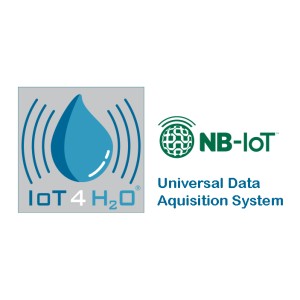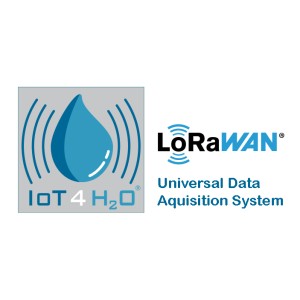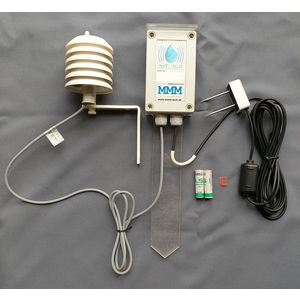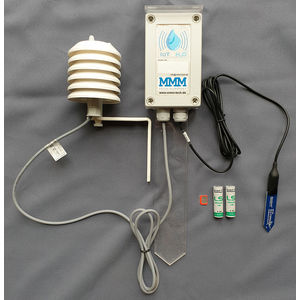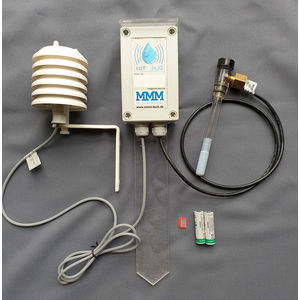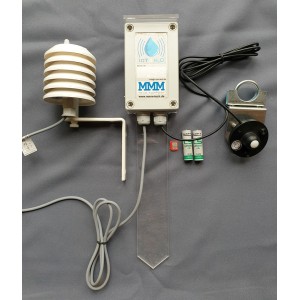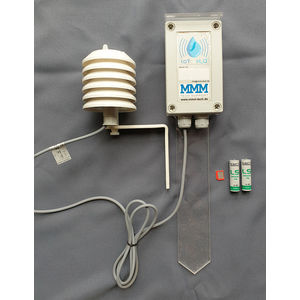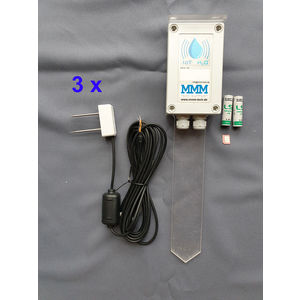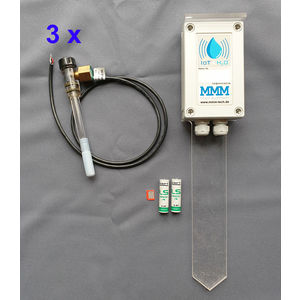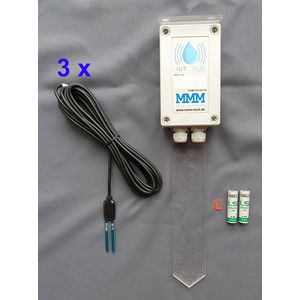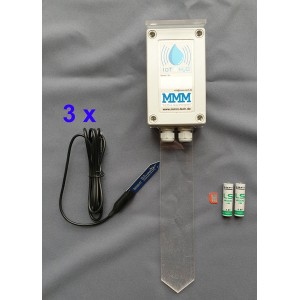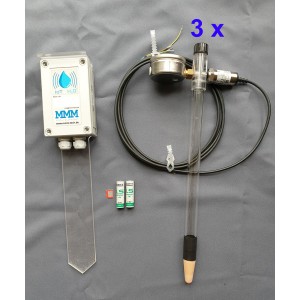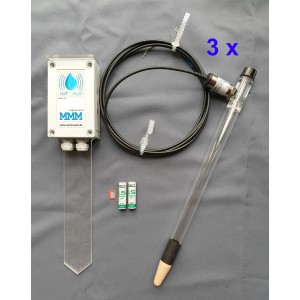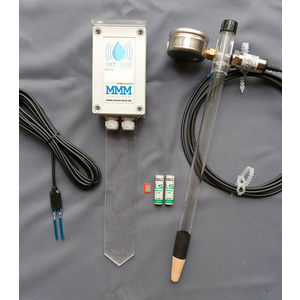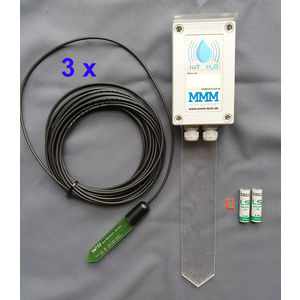IoT4H2O - Universal data collection with IoT
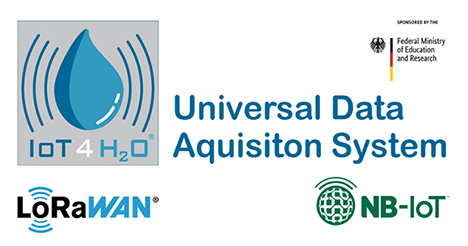 IoT4H2O® (pronounced "IoT for water") are small, low-cost data acquisition and transmission devices that communicate via LoRaWAN or NB IoT wireless standards and can be equipped with a variety of different sensors.
IoT4H2O® (pronounced "IoT for water") are small, low-cost data acquisition and transmission devices that communicate via LoRaWAN or NB IoT wireless standards and can be equipped with a variety of different sensors.
IoT stands for Internet of Things. IoT data acquisition systems transmit the acquired measured values via radio and make the data available in a data cloud.
The IoT4H2O® devices thus enable both the inexpensive new construction of wireless data acquisition systems and the equipping of existing sensors with wireless data transmission capabilities, thus bringing the company's own data acquisition to a new level. Outdated handheld readers or data loggers without wireless data transmission can be replaced while continuing to use existing sensors. In this way, resources are saved.
The IoT4H2O® devices use the IoT narrow band standards LoRaWAN and NB IoT. These radio standards are characterized by extremely low power consumption, low costs, high range, data security and an unprecedented penetration of obstacles, and are therefore ideally suited to the requirements of data acquisition in agriculture and horticulture and generally in the outdoor area.
IoT4H2O® devices are available in two radio standards:
LoRaWAN: is an open source protocol based on the LoRa radio standard. LoRaWAN based data acquisition devices send their data to a customer's own gateway (receiving station), which in turn transfers this data to a customer's own server, where it is then made accessible to the user. Setting up your own LoRaWAN network is simple in principle, but still requires technical understanding and programming skills. When using LoRaWAN based data acquisition devices, there are no costs for data transmission.
NB IoT: NB IoT data radio uses the existing infrastructure of conventional mobile phone, which means that network coverage is excellent. The data received via NB IoT radio is transferred from the mobile phone transmission towers to the Internet, where it is made accessible to the user. NB IoT data aquisition devices do not require their own network infrastructure but a special SIM card. This results in running costs, but they are significantly lower than the costs of conventional mobile phone SIM cards.
The NB IoT networks are continuously being expanded. Currently (as of October 2022), the IoT4H2O® devices can be used in the following countries:
- Australia
- Belgium
- Germany, Denmark
- Estonia
- France, Finland
- Greece
- Italy, Ireland
- Japan
- Canada
- Liechtenstein, Luxembourg
- Madeira, Malaysia, Malta
- Netherlands, New Zealand, Norway
- Austria
- Poland, Portugal, Puerto Rico
- Romania, Russia
- Spain, Slovenia, Slovakia, Sweden, Switzerland, South Africa, Sri Lanka
- Czech Republic, Taiwan
- Hungary
- United Kingdom, United States, US Virgin Islands, Vatican, Vietnam
IoT4H2O® devices with LoRaWAN radio
From 415.31€
Ex Tax:
349.00€
The solution for integrators and developers
IoT4Vol -T10 - volumetric measurement of substrate humidity
1,332.80€
Ex Tax:
1,120.00€
Monitoring of substrate moisture with 3 x volumetric sensors type Teros-10
IoT4hPa-MLTE - Measurement of soil water suction in substrates
1,071.00€
Ex Tax:
900.00€
Monitoring of substrate moisture with 3 x Irrometer mini tensiometers for substrates
IoT4Vol -EC5 - Volumetric measurement
1,332.80€
Ex Tax:
1,120.00€
Monitoring of soil or substrate moisture with 3 x universal volumetric sensors type EC-5
IoT4Vol -SM100 - Volumetric measurement
946.05€
Ex Tax:
795.00€
Monitoring of soil or substrate moisture with 3 x inexpensive, universally applicable volumetric sensors type SM-100
IoT4Vol -TXEM - Measurement of soil water suction with tensiometers
1,273.30€
Ex Tax:
1,070.00€
Monitoring of soil or substrate moisture with 3 x TX-E electronic tensiometers with additional analog manometer.
IoT4Vol -TXE - Measurement of soil water suction with tensiometers
1,166.20€
Ex Tax:
980.00€
Monitoring of soil or substrate moisture with 3 x TX-E electronic tensiometers without pressure gauge.
IoT4PF -Mix - Measurement of soil water potential and volumetric water content
1,053.15€
Ex Tax:
885.00€
Monitoring of soil or substrate moisture with an electronic TX-E tensiometer with additional analog manometer and a universally applicable volumetric sensor type EC-5
IoT4Vol -SMT50 - Volumetric water content measurement
838.95€
Ex Tax:
705.00€
Monitoring of soil moisture with 3 x low-cost, volumetric measuring SMT-50 sensors.
 EN
EN  DE
DE  IT
IT  FR
FR  ES
ES 
